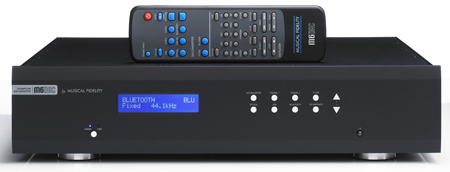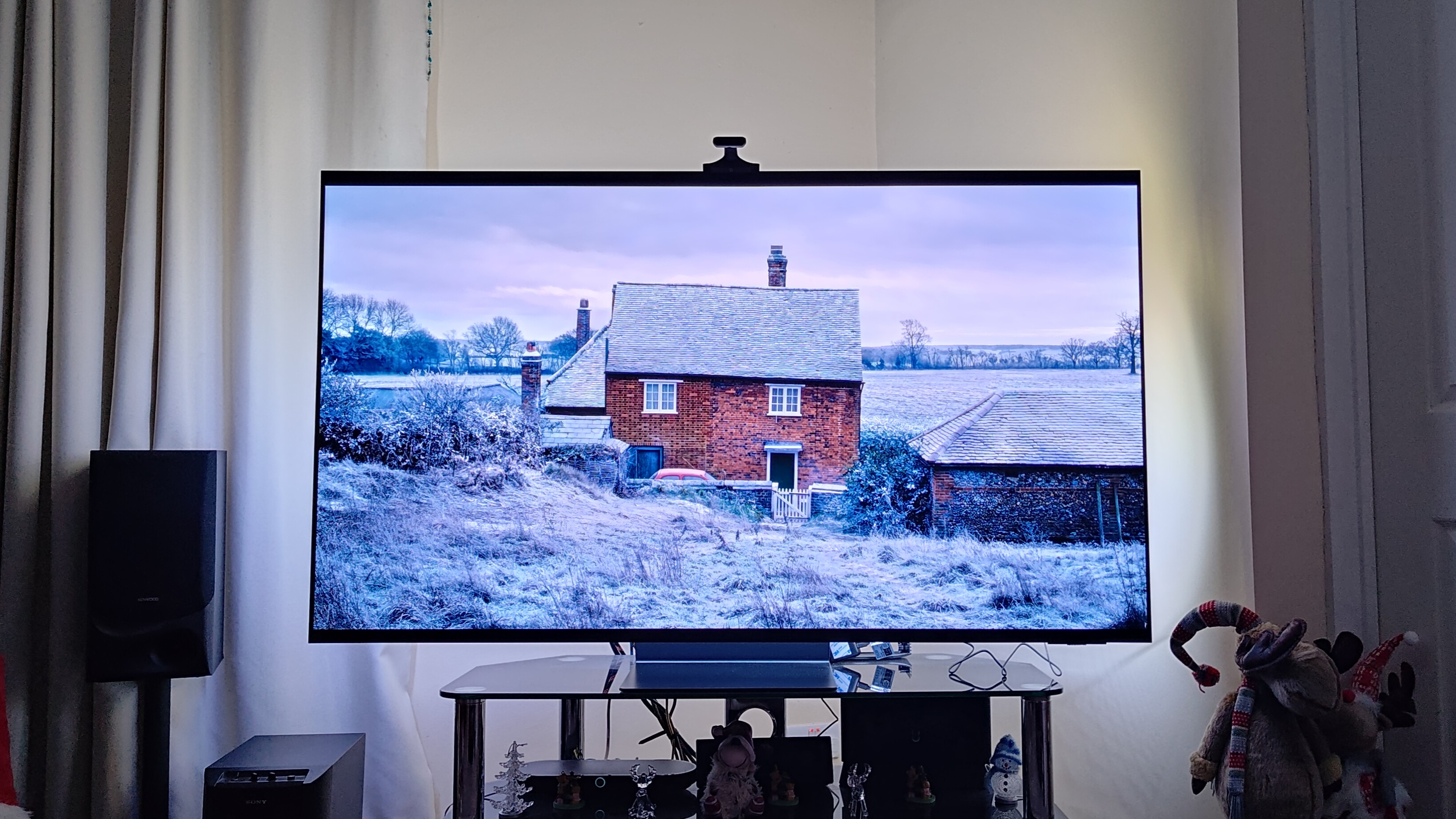What Hi-Fi? Verdict
The M6 DAC is a mighty performer but that high price and the quality of the competition robs it of a fifth star
Pros
- +
A powerful and dramatic sound
- +
fluid presentation
- +
expressive midrange performance
- +
impressive sound staging
- +
aptX capability
Cons
- -
Poor display
- -
lacks a little rhythmical precision
- -
up against some tough competition
- -
high price
Why you can trust What Hi-Fi?
Two thousand pounds is a lot of money to spend on a stand-alone digital-to-analogue converter – but then Musical Fidelity's M6 is quite some DAC.
The company has pedigree in this sector. It was one of the pioneers of outboard conversion back in the '80s. At the time DACs were seen as a means of improving the performance of the relatively limited players of the day.
It also allowed people to keep pace with rapidly changing conversion technology without having to change their pricey CD player every time. Remember, this was a period when new DAC chips were being developed at a frightening pace.
Today, it's the need to improve computer audio that's driving the current explosion of converters. While most of them are pocket-sized USB devices, there's clearly room for more sonically ambitious options at higher prices.
Musical Fidelity M6 DAC: Build quality
The M6 DAC looks every inch the upmarket proposition. It's imposing in size and is built to a high standard. Fit and finish are good. There are two colour options, the black of our review sample and silver.
Take a look round the back and it's obvious the company has tried to cover all bases. To start with there's the now conventional complement of USB, optical and coaxial inputs. As usual, optical is limited to 24Bit/96kHz with the coax alternative moving that on to 24Bit/192kHz compatibility.
The latest hi-fi, home cinema and tech news, reviews, buying advice and deals, direct to your inbox.
The USB input (24Bit/192kHz compatible) is asynchronous, which means the M6 DAC, rather than the computer it's attached to, takes charge of the timing of information flow. This approach is usually a good thing, and tends to result in a better sound.
Any Apple Mac with OSX 10.6.4 or later will be able to stream 24Bit/192kHz music as standard. If you have a PC, it will need new USB drivers to be installed, which is a simple enough task as Musical Fidelity provides the required software to work with Windows XP, Vista and 7.
The M6 DAC also feature the rarely seen AES/EBU (24Bit/192kHz compatible) digital input too. This connection isn't normally seen in domestic hi-fi, but it's nice Musical Fidelity has gone that extra step to ensure compatibility.
All these inputs are mirrored in the M6's digital outputs, should you want to record or process the signal in some way.

Musical Fidelity M6 DAC: aptX Bluetooth
When it comes to features it's in the inclusion of an AptX-compatible Bluetooth connection that the M6 DAC starts to really pull ahead of most rivals.
The company supplies a small, stand-alone Bluetooth aerial with the DAC. This aids reception compared with an on-board alternative. The connecting wire isn't particularly long, but we had no problem in getting Bluetooth working. Pairing the DAC with our MacBook proved the work of minutes.
Move around to the M6's front and the controls are laid out in a logical enough manner. We'd like a better display though. The one used is relatively small, and of poor contrast, so it's quite hard to read from a distance or at an angle.
Musical Fidelity M6 DAC: Volume control
The M6 DAC is unusual in that it allows the user to trim analogue output levels. There's a small switch around the back that either fixes its outputs at a broadly industry standard 2.2 Volts for single-ended and 4.4 Volts for balanced, or allows a plus or minus 10dB adjustment.
This feature allows level matching between sources, so there isn't a massive change of volume when switching from say, a record player to the DAC.
We think Musical Fidelity has missed a trick here. A greater range of adjustment would have allowed the M6 DAC to double as a digital preamp, and work directly into a power amplifier or pair of active speakers. It's a missed opportunity.
However, this digital-to-analogue converter is a fine performer regardless of how it's connected, though there's a small degree of tweaking involved.

Usually when a product has both balanced and unbalanced analogue connection we tend to prefer the former. Not in this case. The balanced option delivers all the extra boldness and authority we'd expect (both properties partially associated with the extra voltage output), but here the presentation suffers from heavy-handedness at low frequencies and a lack of cohesion through the frequency range.
Switch to single-ended, and in our Bryston BP26/ 4BSST2/ATC SCM50 reference system at least, the sonic presentation is better balanced and more engaging.
This DAC also gives the user a choice between fast and slow filter settings. We found the differences between these subtle, and the choice is more likely to be dictated by personal taste and partnering system than any obvious superiority of one over the other. For what it's worth we preferred the slow option.
Musical Fidelity M6 DAC: Sound quality
We were intrigued by the inclusion of Bluetooth. It sounds acceptable with a range of files, but even with an aptX transmission there's no doubt that this is the most sonically limited option.
That said, it's still possible to get enjoyable results. Let's not forget, this input opens the DAC up to use from smart phones and tablets. That's a good thing.
Switch to any of the conventional hi-fi connections and it becomes clear that the Musical Fidelity is a massively capable unit.
Play a 24Bit/96kHz recording of Kate Bush's Snowflake and it's the quality of midrange that impresses. Through the M6 DAC it sounds wonderfully fluid, expressive and full-bodied. There's plenty of detail and we had no problem picking up the nuances in Kate's voice.
Move onto the CD rip of John Lee Hooker's Boom Boom and this DAC has no trouble conveying the song's infectious energy and drive. We've heard greater rhythmical precision from the likes of NAD's Award-winning £1500 M51 DAC, but still had no trouble enjoying what the M6 had to offer.
Indeed, this converter pulls ahead of the NAD when it comes to delivering scale and overall authority. This impression is helped by a thunderous ability to deliver wide-ranging dynamics and a punchy, though slightly overstated, low end. Pleasingly that forthright bass remains agile and tuneful, regardless of music played.
This DAC is a true all-rounder: it mesmerises with Arvo Part's Litany, and engages with the low-key but beautiful Last from the Unthanks. But feed it 24Bit/88kHz of the Rolling Stones' Gimme Shelter and it's happy to rock.
Musical Fidelity M6 DAC: Rivals
The M6's problem is that there are a number of terrific alternatives at around this price. The aforementioned NAD is pretty much on a par sonically, but costs a whopping £500 less.
The two have strikingly different sonic presentations, and the NAD doesn't have that useful Bluetooth facility. Equally, the M6 lacks the NAD's digital preamp capabilities.
Move a little higher in price and the £2150 Naim DAC comes into view. This lacks some of the Musical Fidelity's feature set, but counters with a more direct presentation and the option to improve performance through power supply upgrades.
The Naim sounds terrific to start with and can be made even better, something that can't be said for the Musical Fidelity.
Musical Fidelity M6 DAC: Verdict
Where does that leave the M6 DAC? Well, it's in a rock and hard place situation that leaves even something this talented a touch wanting. With a better grasp of rhythms and a touch more transparency it still would have claimed a full five stars. As things stand, it just misses out.
Follow whathifi.com on Twitter
What Hi-Fi?, founded in 1976, is the world's leading independent guide to buying and owning hi-fi and home entertainment products. Our comprehensive tests help you buy the very best for your money, with our advice sections giving you step-by-step information on how to get even more from your music and movies. Everything is tested by our dedicated team of in-house reviewers in our custom-built test rooms in London, Reading and Bath. Our coveted five-star rating and Awards are recognised all over the world as the ultimate seal of approval, so you can buy with absolute confidence.

